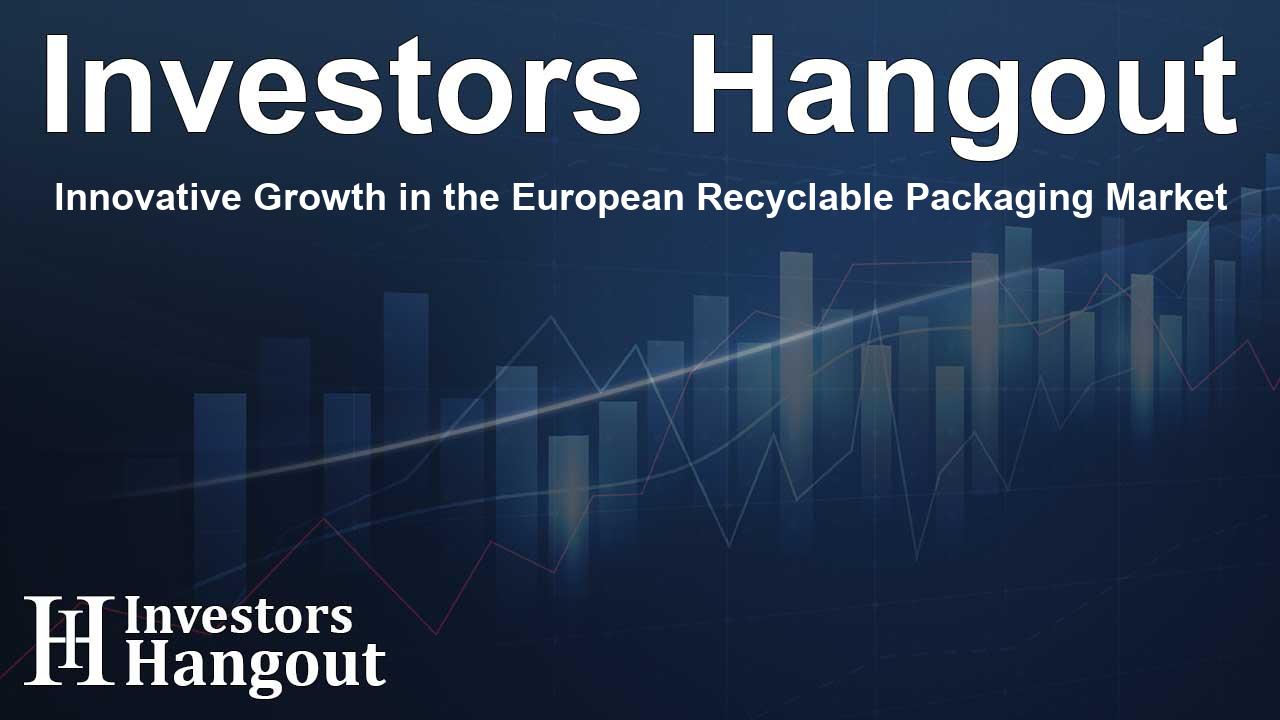Innovative Growth in the European Recyclable Packaging Market

Emerging Trends in the European Recyclable Packaging Market
The European recyclable packaging market is on an exciting trajectory, starting from USD 7.17 billion and projected to reach USD 12.26 billion by 2034. This growth comes as a result of increasing regulations focused on sustainability, and a pressing demand from consumers for eco-friendly alternatives. The transition to recyclable materials is being propelled by initiatives like the Circular Economy Action Plan, aimed at reducing waste and promoting responsible consumption.
Understanding Recyclable Packaging
Recyclable packaging is defined as materials that can be collected and processed to create new products after their original use, thereby minimizing waste and conserving natural resources. This includes a range of materials from paper and cardboard to certain types of plastics and metals, provided they meet recyclability standards. The aim is to ensure that these materials are free from contaminants, properly sorted, and integrated into existing recycling frameworks.
Market Drivers and Innovations
Several factors are driving the advancements in the recyclable packaging market across Europe. The strict regulations enforced by the EU are nudging companies towards sustainable practices, emphasizing the need for alternatives to single-use plastics. In addition, the innovations in bio-based materials and recycled content are gaining significant traction, often supported by technology like AI that enhances both design and recycling processes.
Key Trends Shaping the Market
- Mono-material packaging solutions: These are designed for easier recycling, with a notable rise in the popularity of flexible pouches and films.
- Increased use of recycled-content materials: A growing number of brands are leveraging materials that contain over 50% recycled content as part of their sustainability commitments.
- Plant-based and biodegradable options: The creation of packaging from materials like seaweed and cornstarch is becoming more common.
- Advancements in technology: The use of AI in packaging design is proving beneficial in minimizing waste.
- Shift towards reusable systems: These are increasingly integrated into retail and e-commerce, aligning with regulatory pushes for sustainability.
Challenges to Overcome
Despite the vibrant growth prospects, there are significant challenges that persist within the European recyclable packaging landscape. One pressing issue is the inconsistency of recycling infrastructure across EU member states. While many countries are enhancing their sorting and processing capabilities, others lag behind, which can lead to lower recycling rates and ineffective packaging solutions.
Additionally, the cost associated with sustainable materials is often higher than that of traditional packaging options. The complexity of certain packaging designs can also pose difficulties in the recycling process, as can contamination from improper disposal methods. Combating these challenges requires ongoing efforts and innovative approaches to enhance both consumer education and industry practices.
Regional Insights
Europe is a front-runner in the recyclable packaging domain, thanks to a robust regulatory framework and a conscientious consumer base. Countries like Germany lead the way with high recycling rates, actively driving initiatives that encourage proper waste management. Meanwhile, France has implemented comprehensive laws banning single-use plastics, thus fostering a shift towards reusable packaging systems.
The UK, while no longer part of the EU, is aligning its sustainability policies closely with its European counterparts by implementing taxes on plastic packaging and preparing for national recycling initiatives. Italy and Spain are also making substantial strides by encouraging bio-based alternatives through financial incentives and educational campaigns.
Germany's Leading Role
Germany stands at the forefront of the recyclable packaging market in Europe, with a remarkable recycling rate of over 67% from municipal waste. Its stringent regulations and efficient waste management systems have set a standard for other countries. Key players in the German market are continuously innovating to produce packaging that is not only recyclable but also meets the needs of eco-conscious consumers.
Conclusion
The European recyclable packaging market is undergoing significant transformation, driven by innovation and increased consumer demand for sustainability. With projected growth reaching USD 12.26 billion by 2034, it is clear that recyclable packaging is becoming a focal point for businesses aiming to align with environmental goals. As regulations evolve and consumers become more informed, the opportunities for eco-friendly packaging solutions are bound to expand.
Frequently Asked Questions
What is the current size of the European recyclable packaging market?
The market is expected to reach USD 12.26 billion by 2034, starting from USD 7.17 billion in 2025.
What materials are typically used for recyclable packaging?
Common materials include paper, cardboard, glass, and specific types of plastics and metals that meet recycling standards.
What are some key trends in this market?
Key trends include mono-material solutions, increased use of recycled content, and advancements in plant-based alternatives.
What challenges does the market face?
Challenges include inconsistencies in recycling infrastructure, higher costs of sustainable materials, and complexities in packaging designs that hinder recycling.
Which regions are leading in recyclable packaging?
Germany, France, the UK, Italy, and Spain are leading regions actively working to enhance their recyclable packaging initiatives through regulations and consumer awareness.
About The Author
Contact Henry Turner privately here. Or send an email with ATTN: Henry Turner as the subject to contact@investorshangout.com.
About Investors Hangout
Investors Hangout is a leading online stock forum for financial discussion and learning, offering a wide range of free tools and resources. It draws in traders of all levels, who exchange market knowledge, investigate trading tactics, and keep an eye on industry developments in real time. Featuring financial articles, stock message boards, quotes, charts, company profiles, and live news updates. Through cooperative learning and a wealth of informational resources, it helps users from novices creating their first portfolios to experts honing their techniques. Join Investors Hangout today: https://investorshangout.com/
The content of this article is based on factual, publicly available information and does not represent legal, financial, or investment advice. Investors Hangout does not offer financial advice, and the author is not a licensed financial advisor. Consult a qualified advisor before making any financial or investment decisions based on this article. This article should not be considered advice to purchase, sell, or hold any securities or other investments. If any of the material provided here is inaccurate, please contact us for corrections.
